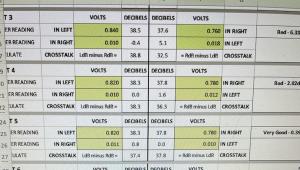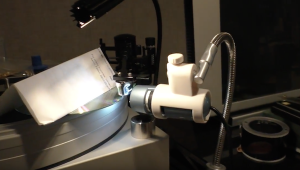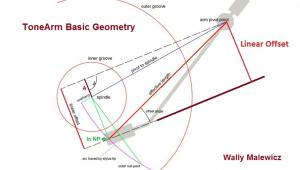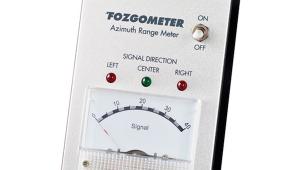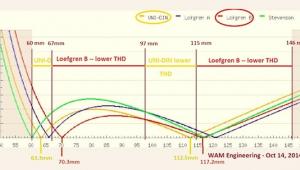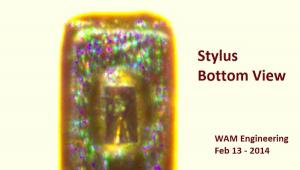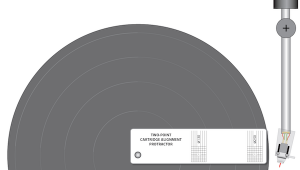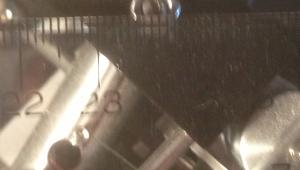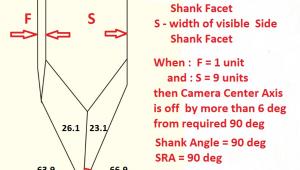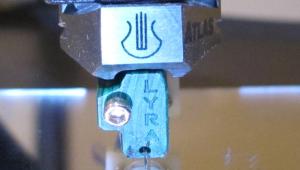I've always wondered about the topic, and finally it's answered.
Everything You Know About Skating Is Wrong!
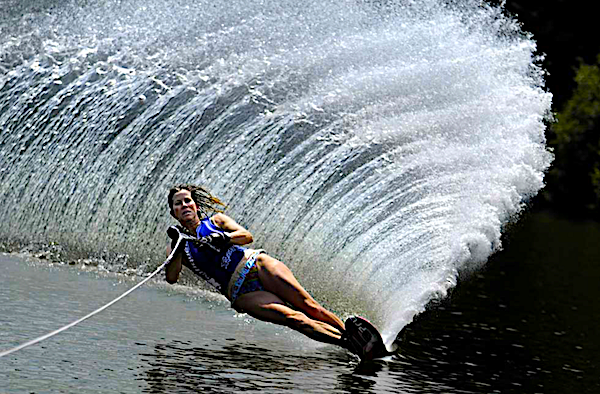
Yes, skating begins with friction in the groove and it is caused by a “vector force”, but skating is not the result of your tonearm’s offset angle, either at the head shell or produced by an “S” shaped arm.
That’s what my late mentor Wally Malewicz taught me, and it turns out to be incorrect, as proven by a collaborative effort between Wally’s “right hand man” J.R. Boisclair and Wally’s son and mechanical engineer Andrzej. I like their water skiing analogy, about which you can read here. But before getting directly to the point, it’s key to remember why in the first place, pivoted arms have “offset angles” and “overhang” (I know many AnalogPlanet readers know all of this but hopefully this post will attract many others who don’t know this). Both are related to minimizing LTE (“lateral tracking error”). In the case of “overhang” it literally means the number of millimeters the stylus tip “overhangs” the spindle were you able to place the arm directly over the spindle. The actual arm length is the distance from the pivot to the spindle. The “overhang” is the distance from the spindle to the stylus tip. The arm’s effective length is the pivot to spindle distance plus the overhang. For instance, Rega’s older RB250’s geometry is: 222mm pivot to spindle, 15mm overhang and 237mm “effective length”.
These videos are used permission of WAM Engineering Ltd.: In this first video you will see, using a blank record, (just for demonstration purposes don’t use a blank record to set anti-skating!), skating on a typical “S” shaped arm fitted with a spherical stylus cartridge, the importance of which will be discussed in a later video. Here, there’s an offset angle:
In this second video, the cartridge has been twisted in the head shell to eliminate the offset to 0 degrees and the skating force is for all intents and purposes identical to what’s seen in the first video. So much for “offset angle creates skating”.
In the third video the offset angle is negative, that is, beyond 0 degrees offset angle. The arm still skates. Of course this is with a spherical stylus, which I’m sure you now understand why using a spherical stylus was critical for this part of the demo. No matter what part of the stylus “sees” the record surface, the contact area remains the same.
The contact area of a properly mounted micro-ridge or other “severe” profile stylus will be parallel to the record radius and produce little resistance to the skating force moving in the same direction. Twisting the cartridge to change offset angle as in the previous videos would put the stylus contact surface at an angle to the radius and thus produce more resistance to the skating force, which would alter the velocity and thus add fuel to the “offset angle produces skating” fire!
In the 4th video Mr. Boisclair clearly demonstrates why overhang produces skating, using a special arm mount that allows the arm to be moved forward to eliminate overhang. He then repeats the blank record test and the arm skates in until…… watch!
In the 5th video, again with overhang removed, the stylus is lowered towards the end of the record and the skating force reverses, causing the stylus to move away from the spindle and head back to the point of tangency perfection.
In the 6th and final video Mr. Boisclair defines tangency for those of you who are mathlexic (which includes me!). He then returns the arm to its correct pivot to spindle distance, which again produces the specified overhang. The arm then skates towards the record center and he shows you how doing so swings the tangent line, which is then at a significant angle to the line formed between the stylus and the pivot causing a sideways force, which is our skating force as analogized by the water skier in the picture at the top of this story!
Conclusions
Skating is real. Not compensating for it makes no sense. The geometry of Increased tone arm length does result in a lower offset angle but that does not decrease skating by any appreciable amount and is therefore not among the advantages of a longer tone arm. Creating a tonearm with zero offset angle does not eliminate skating. Creating a tonearm with no overhang does eliminate skating at the point of tangency as demonstrated in the video, but only at that point and in fact, beyond that point the arm produces its own “anti-skating” as it wants to return to the point of tangency!
Tangential pivoted arms such as HiFiction's Thales arms do skate, and that is why the Thales arms do incorporate anti-skating compensation.
The discussion of how best to set anti-skating, in which readers and Mr. Boisclair all engage following the Wallyskater V2.1 coverage is well worth reading. It also demonstrates that AnalogPlanet has the best, most constructive readers and knowledgeable readers.
Finally here’s Mr. Boisclair’s Skating PowerPoint Presentation.
- Log in or register to post comments


Skating is just a fact of life for pivoted, offset tonearms with overhang.
First of all I am not schilling for anyone.
This is where tangential tonearms can shine. With minimal skating forces the stylus is left to do its job without interference. But the problem with most tangential arms is a horrifically high horizontal effective mass, worse than skating! There are now two tonearms that provide tangential tracking without the need for an anti skating devise and have horizontal masses similar to any pivoted tonearm. These are the Reed 5T and the Schroder LT. Michael Fremer just published a favorable review of the Reed. I think that if he had an arm wand with a higher effective mass the bass performance would improve in line with his SAT arm. The Schroder LT is a brilliant exercise in lateral thinking. It does exactly the same thing as the Reed but without any Lasers and servos. I am hoping Mr Fremer will be able to review that arm. No anti skating required:)

First of all, thank you for your involvement in this conversation and the last article on the WallySkater. We appreciate audiophiles who want to dig into the details!
Unfortunately, the title of this article applies to your comment about the Reed and Schroeder tonearms as well ;-) Sorry!
Look closely at videos #4 & #5 and see if you still feel that way about tangential pivoted tonearms.
Granted, such tonearms experience a good deal less skating force at the record extremes than do typical pivoted tonearms across the entire record, but they still experience skating force - in BOTH directions. Skating force on these arms decreases steadily from the record extremities until they reach zero when the stylus lands on the point of perfect tangency. You can see this in action on the videos.
Tangential pivoted tonearms probably do a good job without anti-skating at preserving the stylus by providing uneven wear at the outside of the record against the right channel facet of the stylus and uneven wear at the inside of the record on the left channel facet. This may balance stylus wear, but what about the grooves of the record???
I don't have the answer to that question, but I know it is certainly calculable. Alas, my priorities are not there right now as I've got coefficient of friction on my table right now. WallySkater owners deserve those results and I am aiming at them.
So, your first comment in your post should read, "Skating is just a fact of life for ALL pivoted arms" - just like Michael said. Overhang just adds a new dimension to it and offset angle has nothing to "directly" do with it.
If you want to know how offset angle "indirectly" affects skating, see Michael's link to the WallyTools website article. Michael alludes to it in this article as well.
Michael's wider point is, if I stretch my understanding of it, that there is nothing inherently BAD about skating force - as long as it is compensated for. Doing that PROPERLY is the job of the WallySkater to determine. (O.K., that last sentence was mine)
Enjoy analog forever!

Since we're discussing Wally, he got to the bottom of correct effective length year ago. He originally made Tractors based on the spec you've quoted from Rega. It turns out there isn't any engineering behind those numbers. The thought was Rega reused Tribal knowledge from when the R200 days and 15mm was the spec provided from the manufacturer in Japan. This was causing problems with alignments that were reported to him on forums. He corrected the issue. So he contacted Clearaudio to get an actual engineered answer. This is what he got and changed the corrected effective length (Baerwald) to 239 mm. Some of the disparity has do with Rega using a Stevenson based alignment. He corrected the distance on Tractors made after this discussion and offered trade-ins if you bought one with the incorrect length. My Wally Tractor has the corrected length of 239mm.
"P> Sp = 221.7mm. This fixed distance requires (for Baerwald alignment) Ovhg=17.3mm and Leff will be 239mm."

Apart from issues of uneven stylus and groove wear due to skating forces or excessive anti-skating you also have the cantilever responding unevenly to the groove modulations because more force is applied on one side of the cantilever than the other. Visualize a spring lying horizontally with more pressure applied on one side. It will require more force to spring back to that side. Or maybe I am looking for problems where there are none.

All tangential arms that drag a carriage along a straight path may be just as bad as anti skateless arms in terms of effects on tracking, stylus and groove wear. Their horizontal effective masses are just too high. The stylus and cantilever have to drag them along, back and forth if the record is eccentric. I never purchased one for this reason. The Reed 5T and Schroder LT defeat this problem. Now, nothing is perfect. For these arms to be perfectly skateless the record would have to be perfectly flat, the turntable leveled perfectly and the arm positioned dead on tangent. I do not know how the Reed is set up But the Schroder handles this problem by supplying a special flat grooveless record. With the stylus down on the record you can see how the arm is drifting. There is an Allen screw adjustment that alters the angle of the horizontal bearing platform and the position of the stylus relative to the tangent.
You adjust it until the arm does not move. It is still not perfect but it does guarantee that any skating forces developed are minuscule in comparison to any other type of arm. This is different than using a grooveless record for adjusting anti skating in an offset arm which I think we all agree is a bad idea.
The problem with skating is there is no way to compensate for to near perfectly, too many drifting variables. Good arm do compensate for it reasonably well allowing the stylus to track just about any record.
These two arms are the only two that I know of that avoid the problem altogether. There is no skating force in the normal sense. I would hope this type of design will drift down to lower price points. In the meanwhile the Wally Skater has a huge target audience:)

...that I have another video for the WallySkater I need to create and post to the WallyTools YouTube Channel.
Using the WallySkater, it is possible to measure those horizontal forces you mention (different than the swing test which is already posted to YouTube). I agree with you: some tangential arms are tough to move horizontally and may cause uneven stylus and groove wear. Putting them on a WallySkater gives you the percentage of the tracking force that is required to move them across the record. (I know there is a difference between static and dynamic coefficient of friction but without much more complex testing, there is no other way I know to measure this.)
You can use the same horizontal friction test on pivoted arms, of course. It would be interesting to see whether the multiple pivot points of the Reed and Schroeder result in a limiting of the horizontal freedom.

Thank you for this fascinating stuff.

Daft. The first 3 videos demonstrate little. Twisting the cartridge in the headshell affects either the official arm offset angle (which is the the angle between a line drawn from the stylus and the arm pivot and a line drawn from the stylus parallel to the headshell), nor the instantaneous effective offset (which is the angle between the a line drawn from the stylus to the arm pivot and the angle of the force vector caused by friction on the stylus). The rest of the videos demonstrate the effective offset angle varies with overhang, not that overhang causes skating.

... affects _neither_ the ...

...but as you are a mathematician I am certain you can provide the formula. I promise not to call your formula unintelligent! ;-)
Of course, the shape of the arm has no bearing on skating at all. S-shape, hockey stick shape, straight arm/headshell with cockeyed cartridge (e.g., Schroeder arms) or "rear-ward" offset headshells (e.g. Durand Tosca). The only points ON the tonearm that matter in the formula for coefficient of friction and its role in skating force are the pivot point and the stylus.
So, of course the twisting of the cantilever does not affect the TONEARM'S "offset angle" - it wasn't claimed to have done that. The point is that cantilever offset angle (like the tonearm's "offset angle" - if it even has one, as they are not required on pivoted tonearms) has NO direct impact on skating forces - which runs contrary to the popular belief which has, unfortunately, informed a few tonearm manufacturer's designs.
Respectfully Yours,
The guys at WAM Engineering

Of course the arm has an offset angle. All simple pivoting arms do. The actual effective offset angle depends on the distance from the record centre, arm length and overhang (as measured in a straight line from the arm pivot). The skating force force depends on this offset angle and instantaneous friction coefficient. Surely i don't need to draw triangles for you guys.

This is the Analog Planet content I am used to! Well done Michael!
I do get into the weeds as far as I can with things like turntable setup and record cleaning, (I probably went too far into the forest on that, but glad I did in the end).
Anyway, this whole thing gave me more confidence in the mechanisms on my tables. I have stock vintage tables with S-arms with the exception of my Denon DP47f. On the Denon the anti-skate is set automatically electronically. Don't ask me how it does that, to me it is magic. I'm fairly intelligent on things audio and physics and such, but I'm not a genius.(I can't design a turntable or what have you). I just know how to set them up. (I learned from Michael and a couple other sources years ago).
While the Wally tool would not be worth it for me to get in my situation I am still glad you made this info available. It helped me confirm I am doing things correctly for my tables. I mean, I can tell by sound alone as could anyone, but it is just nice to know it to identify what is the small stuff and what is not and that I personally don't need to worry. (If I had a different table though, it may be a different story).

In front of such complexity (And In a context where some well know turntable manufacturers tell us to not bother with anti skating) why is it so bad to use a blank record? At least one gets a sense of the forces at play.
The friction might be weaker than on a modulated groove but it doesn’t seem to be a bad place to start.
Adjust the anti skating to steady the arm on a blank record and then give it ‘a little extra’ ?
How bad can it be?


Or maybe neither nor and leave it at that?
That’s what I do in side 4 of Johnny Winter’s « second winter » :)
How off can it be?

If you use a grooveless record to adjust anti-skating so that the arm isn't travelling across the surface with the "right" anti-skate setting applied, you'll be incurring anywhere from 50% to 90% too much anti-skating force - depending upon your stylus profile and a couple other factors. So, if you set it this way and then "back it off a little", how much to back off?

Particularly the first slide in the PDF. I've never seen it laid out so clearly. Thank you!

given that turntables command four, five and even six figures, I’m guessing this issue is not one that affects the sound that much. First world neurotic audiophile problem?

Are you saying the more expensive a turntable the less impact skating has on the sound? That's a new one! Or are you saying that someone spending six figures on a turntable shouldn't invest a few minutes setting the anti-skate because it wont "affect the sound that much"? The logic is slightly baffling, but I take my hat off to you for showing up with a unique perspective!

Michael,
What are we to make to Harry Weisfeld's dislike of skating compensation? He claims he can hear it working as the cartridge makes its way across the surface of the record, with images shifting around and the soundstange skewing in the process. So he doesn't recommend applying any antiskating force to his tonearms.
Based on his stance, is it possible that the cure is worse than the disease?

This makes sense and obviously it can't be good, but it makes me wonder how 'bad' it really is and if it's not more 'worry' than a real threat to the records.
The counterweight at the end of an anti-skating wire weighs nothing, how much difference does the anti-skating force make, at the stylus, in grams?
With a VTF of 2g how much more 'weight' does the inner groove have to carry? 10% more 0.2g? Will that really create so much damage?
Also the stylus gets bounced around so much that this imbalance probably gets lost in all the other forces.
I'm not challenging the need for antiskating. There is an imbalance between the two channels and it cannot be a good thing. Mechanically, sonically it is wrong. The question really is how bad is it for the record in real life (When we keep reading the SPUs tracking at 4g don't hurt (I have to believe it because I use one)).
This to me sounds a bit like record cleaning worries, some turntable manufacturers tell us to not bother (Is it Linn or Rega?) while some predict doomsday scenarios if we don't wash every record for 30 min before every play.
In that case I disagree with both. Dirty record are bad, but doomsday is not going to happen.

Additionally, I have never "heard" the impact of an anti-skating device with two exceptions: when it is significantly over applied (particularly when using a low compliance cartridge) or when it is improperly applied which, when I have seen it, is usually on a unipivoted arm where the anti-skating mechanism design is impacting azimuth.

Question: Michael Fremer sir, but also WAM Engineering, is that a bad taste joke? Or (with all due respect) you just have lost your minds?
The twist of the cart (so its cantilever) does not affect the direction and the vector of friction which is always the tangent to the circle passing through the point where the spherical shaped needle is located into the groove. The vector of the friction, the only thing it knows is that a (special for the purpose) spherical needle is in the groove, so it (the vector) is oriented as the tangent of the circle passing from that point.
This direction of the friction force vector by itself determines the offset angle, regardless of where the cart and its cantilever are facing.
Therefore, no matter how much you turn the cart, either targeting the tonearm pivot, or even to its left, nothing can change the offset angle of the friction force, so always there is a torque with respect to the tonearm's pivot creating the skating force.
But the most hilarious of all is that, while they suggest us, insisting not to use a blank grooveless record for adjusting anti-skating, they are contacting all they experiments in ....a blank grooveless record!! Period.
P.S.1 There are some equally crucial errors in your assumptions, but for those, another time.
P.S.2 Michael Fremer also says, that through this new theory he discovered that analog guru and his mentor late Wally Malewicz had misled him on a/s issue all those years!!!!
A statement that I consider offensive in the memory of the dearly departed, who taught him (and us) and offered so much to the evolution and proper adjustments of analog sound!

What you say is correct! Changing the cantilever offset angle (twisting the cart) does NOT affect vector forces at all. The point was to bring us back to basics in physics because there has been too much misinformation out there - propagated by many manufacturers - that arms, pivoted headshells, etc. eschewing offset angled cantilevers or those without overhang nullify those vector forces - which the videos clearly demonstrate is NOT correct, as do the drawings in the pdf.
I imagine that what you are referring to as "offset angle" is synonymous with the groove tangent which changes across the record's playing surface as depicted in slide 5 of the pdf. In our analog parlance, however, "offset angle" is static and refers to the skew of the cantilever which, when done properly, will agree with the groove tangent ONLY at the two null points.
As for your defense of Wally - thank you. I appreciate VERY MUCH your affection for him and his contributions. Andrzej and I had several discussions around the issue of Wally being "wrong" about offset angle causing skating force and we both believe that in all likelihood it may have been one of his deliberate "errors".
Wally shared many ideas with me on analog alignment, psycho-acoustics, analog design and so on. On more than one occasion, he would share with me a concept that didn't fully agree with - or was an improvement to - his publicly delivered discussions on the topic to which I would always ask him why he didn't do something about it to correct/improve the record. His response was usually on the order of, "I talk to many of these audiophiles every day and if I release all details now it will cause confusion. In time, I will share this stuff."
Wally was an interesting guy.
I never did speak to him on the details of skating at the same depth shared here in this article, so Andrzej and I can only guess that this applied to his discussions of skating too.
I suppose that technically speaking Wally was "correct" that offset angle causes skating force - but he was correct only at 120.9mm and 68mm radii. ;-)
As for the grooveless record use, how else could we possibly show skating in action? Most people aren't trained in how to "see" movement in drawings.
Believe me, I love your defense of Wally. I loved the man and still do. He has influenced my life in more ways than just analog-oriented interests.
Thank you.

I honestly do not understand your position. I prove with my post using the principles of engineering (I am an experienced mechanical engineer) that the skating force is due to the offset angle of the friction vector that is tangent to the circle that passes through the point where the needle is located. You answer me on this, that I am right.
So instead of admitting your blatant mistake to claim with drumbeats that the skating force is not due to the offset of the friction force with respect to the pivot, (which also states the title of the article by Mr. Fremer ) and make amends, instead you trying to distract from the real issues turning the discussion to the departed Wally Malewicz. And Mr. Fremer, after his flashy title: "Everything you know about skating is wrong", the only thing he has to say is "I think my friend Wally would be okay with how I presented this"?

Concerning the "No overhung tonarm" which
just "discovered" and presented in the above article, there is an elementary school's mediocre student's error (in order to support their theory).
Namely they shape an isosceles triangle, which has:
a. its apex in the tonearm pivot,
b. its two equal sides are, one is the line that joins the pivot to the spindle, and the other is the line that joins the pivot with the needle as a tangent on the circle passing from the point where the needle points.
c. its base is the radius from the spindle to the needle, so it's vertical to above tangent, namely vertical to the one of the 2 equal sides of the triangle!! So we have an isosceles triangle that it has the 2 equal to each other angles to be each one 90 degrees, which means that they discovered a triangle whose sum of angles is greater than 180 degrees !!!
OMG!! The bones of Wally Malewicz will definitely be crunching ....

In the last video, I did say that the distance from the spindle to pivot was same as the distance from pivot to stylus. Therefore, this could not be an isosceles triangle and therefore I didn't just "remove overhang", I am now underhung - something which us guys don't like to admit to!
I was rushing through a late night session and you caught an error in my description. Good on ya!
The demonstration remains valid to show the impact of overhang on skating, of course.

I believe the diagram showing zero overhang in Mr. Boisclair’s PowerPoint presentation (slide 2) is incorrect and is actually depicting negative overhang (underhang?). Zero overhang is when the pivot-to-stylus distance is equal to the pivot-to-spindle distance, but the diagram shows the stylus set at a distance that is less than the pivot-to-spindle.
Here's my rough revision of that slide, correctly depicting zero overhang.
https://gallery.audioasylum.com/cgi/gi.mpl?u=32746&f=wallytools_zero_ove...
Tom

Wanted to add that Michael VPI is describing the same error.

Technically, you are correct as well! However, in your drawing, skating forces would be introduced as the groove tangent is no longer parallel to and coincident with the line formed by the stylus to pivot.
I was more interested in demonstrating that point than admitting that I was "underhung" ;-)

Hi, WallyTools,
I worked up another drawing. Is that what you were referring to? I understood the math and physics but the mention of the pivot-to-spindle distances being identical threw me. :-)
https://gallery.audioasylum.com/cgi/gi.mpl?u=32746&f=tonearm_repositione...

Change first line to: Tonearm has been re-positioned so effective length is parallel with and coincident to the tangent to the groove.
Or, if you want satisfy the engineers and not worry about leaving the lay people behind, remove "...parallel with and..." in the preceding sentence. I add that tautology in there in an effort not to lose people who aren't as familiar with geometry.

I think we can agree on several issues. First is skating exists. And, the most important driver is friction between the stylus and the groove. Unfortunately, this is not a constant. Thus anti skate is a ballpark adjustment. The right value is the one that compensates perfectly for the average skating force across the record. Accept for one exact level of friction the stylus is always going to be leaning a little one way or the other. The problem with leaning a lot one way or the other is miss tracking the unloaded side. This is what would cause the most record wear and audible distortion. The threat of miss tracking increases with groove velocity (modulation) as does friction. I currently use miss tacking to set anti skate. I would be interested to see how the Wally Skater agrees or disagrees with this method.
Now for the blank record. Using a blank record increases, let me say that again, increases friction and would cause you to overestimate the anti skating force required. When you place the very tip of the stylus on the blank record you are dramatically increasing the pressure (PSI) seen by the vinyl so much so that that the stylus digs into the vinyl. Try it and you will see a shallow spiral groove cut by the stylus. The analogy is this. What would be easier to slide over ice, the tip of a pick ax or the face of a hammer. With the stylus in the groove the amount of surface area in contact with the groove essentially doubles halving the pressure (PSI).

The hammer face is certainly going to slide over gravel easier than the pick ax point. The frictional forces will just be higher for both than over ice. I used ice in this analogy because we were talking about a blank record not a modulated groove. This holds true for groove velocity(modulation not speed). The major determinants of skating are stylus pressure (maybe better quantified as PSI vs VTF?), groove modulation and position on the record. Minor determinants are overhang, stylus profile, and tonearm geometry.
The point of all this is how to find that best average value. There are several reasonable methods including the Wally Skater. I seems to me the Wally Skaters chief advantage is that it produces a repeatable value without depending on someone's ability to hear distortion or determine what a slow drift is. It's problem is the price. If it is more accurate or produces better results it is certainly worth it for someone who sets up a lot of turntables like Mr Fremer who is constantly changing cartridges.

These comparisons and images are too bold to mean anything. The ice pick does not turn into a hammer. The stylus is a stylus and there is no way there's more pull on it with a blank disc.
The simple fact that an electrical signal and music is being created shows that there is more friction.

Spindle spinner, obviously I am doing a poor job of explaining the physics involved in this situation. I will try one more time. You have a specific tracking force say two grams. With the stylus in a groove there are two contact points one for each side of the groove. Each contact point now supports 1 gram. The pressure is around 10,000 PSI at each contact point.
When you place the very tip of the stylus on a flat disc that one point now has to support the entire tracking force at a pressure of 20,000 PSI. This is now enough pressure to dig into the vinyl causing a big increase in friction. You can easily see this. Just put your stylus down in the run out area between grooves. Then hold up the record to the light and you will see a spiral scratch leading into the next groove.
Because of the increase in friction this method of setting anti skate over estimates the anti skating force required. I think that is the best I can do in explanation.

just like I get that if I put all my weight on one foot I'll sink deeper into the snow than if I put it on both.
What I am saying is that it is a bit too simple an analogy. Lots will depend on the stylus profile etc. It rings true with an elliptical that has large contact points with the sides of the groove, does it with a conical? It also rings true in a silent (ice) part of the groove, you just split the pressure on two points on a similar surface, ok, but that's not the part of the groove we're interested in :) There are so many factors (you point at some of them) but wouldnt also the type of drive, stiff belt, springy belt, direct drive influence things too? There are so many factors that I think we agree (See my first message) that we're aiming at a ballpark. And that although anti-skating is needed, it's not a super critical setting.

Very convincing videos. However, in video 4 either the explanation is either incorrect or I have misunderstood. If the spindle to pivot distance is identical to the cartridge (stylus) to pivot distance, the line from stylus to pivot cannot be perpendicular to the line from the stylus to spindle. In other words, the base cannot be equal in length the hypotenuse in a right angled triangle. Please enlighten me.
Hans

As I'd mentioned to another comment above, you caught an error in my description. The dimension stylus to pivot IS longer than pivot to spindle. I will be making an edit to correct this point soon and will re-post. Lesson: no more late night filming sessions!

Thanks for the respons and sorry for not spotting the correction in the other comments.
Hans

My peasant thinking about anti-skating for the last two hundred years of vinyl playing has been this. (1) Imagine a tangential tonearm (actually the same concept applies to a pivoting arm but bear with me as the concept is clearer with a tangential). That tonearm is ideally tangential. (2) Now imagine that on a 12 inch lp that tonearm is two inches too long. What is happening? Instead of the groves flowing tangentially they are flowing left to right (from the view behind the tonearm pivot). (3) now imagine you have a tonearm that is way too short. The groves are moving right to left (again from the view from behind the pivot). So they are pushing the stylus outwards.
I had long 'understood' that the paddle effect of the angle of offset pushed the stylus inward - the analogy being the rudder of a boat. I accepted that but did not understand how that worked given the circular shape of the stylus (looked at from above). Now I see that the offset is indeed irrelevant.
These are the best clips on Youtube for understanding offset and antiskating.
I do have a question. This relates to pivoted arms. There are said to be two null points, on say a Lofgren alignment. It seems to me that on the arms beginning the stylus would be underhung (shame!) and there would be some outward skating force. At the first null point all would be good. After the first null point there would be some overhang and some skating force toward the center. This would increase then decrease to the second null point where there would be no skating force in either direction. Then there would be more underhang and thus skating would be increasing outwards.
Question. Is this why on your vids that the 'neutral' middle zone shows a bit of sway?

I think the sway you see is because the stylus tip had already carved very light grooves of its own into the grooveless record and the arm was responding to them as they changed the terrain of the record with each revolution.
As for your first question, take a close look at the powerpoint presentation and, specifically, the drawings on the last two pages. "Overhang" doesn't change on an arm - just like the effective length doesn't change. I MADE the overhang change by moving the pivot point of the tonearm. In normal play, overhang remains constant and only refers to the dimension that the stylus goes past the spindle center when the stylus/spindle/pivot are all on the same line.
I hope that helps. Thanks for the compliment on the videos. Many more planned that will, I think, surprise some people as these seemed to. Subscribe to the WallySchool! blog and our YouTube channel so you can get the update notices.

In the preview article to this topic (WAM Engineering's New, Improved WallySkater V2.1, Michael Fremer | Aug 2, 2020), one comment stated "skating force basically occurs because of overhang of pivoted tonearms..." to which Michael replied, "That.....Is correct."
The article here then states «...no overhang does eliminate skating at the point of tangency as demonstrated in the video, but only at that point and in fact, beyond that point the arm produces its own “anti-skating”...» -- Michael is contradicting himself (first he agreed skating occurs because of overhang, then says skating occurs with no overhang except at one radius). I get no amusement from it.
Let me first clear up that what he calls "anti-skating" for the no overhang case is really skating, not anti-skating. Skating is a force at the stylus, anti-skating is applied elsewhere with the intent to counteract skating. As was plainly shown in the video, skating may be either inward or outward and both cases arise from the same cause, so calling one case "anti-skating" is just plain idiotic.
Now concerning overhang, the discussion in video #6 seems lacking, which is rather peculiar following what was shown in video #5. Skating was shown to occur no overhang -- at larger radii the skating was inward, and at smaller radii it was outward, with one radius between the two ranges where no skating occurs. Perhaps video #6 could have prevented Michael's confusion by explicitly stating what had been demonstated: the standard overhang ensures the skating force will always be radially inward. And you can expect an anti-skating system will be easier to design if it only has to apply its corrective force in one direction.

The groove-less experiments do not control all variables well (e.g. the levelness of surface0 and also does not agree with what's happening in a groove. For example, the friction comes from the tip of the stylus against a flat surface. In a groove, it is the sides of the tip that are in touch with the walls.
Wally was mostly correct, this is just plain law of classical physics: side force/momentum exists when playing a record if the cartridge's cantilever does not align with the pivot point of the tone arm. Even in arms with no offset angle or linear tracking arms, the cantilever may not be entirely parallel to the arm tube, hence inward or outward side force will be generated.
When side force is present as the stylus is playing in the groove, the groove wall will stop the stylus from moving sideways, but the arm's momentum will exert force on the damper/suspension of the cartridge, making one side of it preloaded. If the stylus and cantilever wants to move in the preloaded direction, beyond certain degree the damper/suspense "bottoms out", and mistracking occurs. This is very visible by playing test signals and observe the wave form on a scope. In a typical pivoted arm, if no anti-skate force is applied, the stylus/cantilever will be pushed outward by the inner groove wall from the arm's inward momentum, loading the outer (right channel side) part of its damper/suspension. As a result, the right channel tends to distort/mistrack much easier since stylus/cantilever tends get impeded by the bottomed-out damper/suspension when moving outwards.
The anti-skate force is necessary only to prevent the bottom-out situation in the cartridge's damper/suspension, and this means that the softer the damper/suspension, the less anti-skate force is needed, assuming all other factors being equal.

A. Cartridge's cantilever not exactly in line with the arm's pivot point: this includes pivoted arm with or without offset angle, as well as linear tracking arms.
B. Torsion force exerted on the stylus tip when both sides of the stylus do not have equal friction forces.
C. Others: off-center spindle holes of record, non-level record surface, etc.
Overall, A remains the strongest source due to the inertia/momentum from the arm.

Anti-Skating and Side Force, Part#1: Classification of Various Side Forces during Vinyl Record Playback
https://bingrungtsai.blogspot.com/2021/11/classification-of-various-side...
As we view from the front side of a cartridge playing a record, the side forces exerted on the cartridge's stylus/cantilever will be parallel to the record surface, and (mostly) perpendicular to the cantilever. For easier discussion below, the direction for side force toward the center of the record is termed "inward", whereas the direction toward the rim of the record is "outward".
During vinyl playback, given proper tracking force setting, the majority of tracking distortions or "break ups" are due to the existence of persistent side forces causing uneven loads to the damper in a cartridge. When the damper, like a spring compressed to the limit of its normal operating range, cannot accommodate the cantilever moving in certain direction, the stylus will fail to follow the trajectory of groove modulations. In other words, in such situations, the damper is not able to yield further to allow the cantilever to move freely, as such the stylus cannot trace the signal properly, and distortions occur. Only in uncommon situations the distortions result from groove modulations surpassing the tracking capability of the cartridge, mainly seen in cartridges with unusually stiff dampers.
The characteristics of side forces can be divided into two major categories. In the first category, the direction of the force alters at about 1/20 second or longer period, or even not changing direction at all for the entire side of the record. This directional-change rate is at or below the low-frequency resonance of the cartridge-arm combo, hence such force CANNOT be effectively absorbed by the damper in the cartridge, thus propagates between the tone arm and the cantilever of the cartridge and is stored in the cartridge's damper as potential energy. This category will be termed "DC-mode" side force, for its similarity to the Direct Current in electricity which the current flow does not change direction.
In the second category, the direction of the force alters rapidly, similar to the AC electricity. Such side force manifests as kinetic energy and is quickly stored and then released by the damper in the cartridge.
=========================================================================
Category of side forces, Group 1:
(1A) When playing a record, each side of the stylus contacts the groove wall and generates frictional forces. The forces drag the cantilever forward as in Figure.1. In most cases, the extended straight line from the cantilever does not precisely coincides the pivot point of the tone arm, a torque force is therefore generated which pushes the arm assembly in or outward.
(1A-1) For pivoted arms (either conventional or tangential) with an offset angle, as in Figure.2 below, the drag on the cantilever generates forward force (red arrowed line) , together with the blue line indicating the moment arm, generates inward torque acting on the tone arm.
(1A-2) In linear tangential arms or straight pivoted arms, both without offset angle, if the cantilever of the installed cartridge is not precisely pointing toward the pivot center, the drag on the cantilever during play can still generate inward or outward torque on the arm.
(1B) When the spindle hole of the record is off centered, the rotation of the record will bring the cartridge and arm assembly inward and outward alternatively at about 1.8 second interval, hence generating side forces.
(1C) The surface of a record is not entirely level, causing uphill and/or downhill effects as the cartridge plays and the arm moves toward the center spindle.
=======================================================================
Categoriy of side forces, Group 2:
(2A) As a stylus interacts with both groove walls, especially for stereo records where the two walls are engraved with different signals, the two contact sides of the stylus may take on forces of uneven magnitudes, generating rotational torque on the stylus shank, then propagating upward to the cantilever. Depending on the signal contents, such torque can quickly appear, disappear, and the rotation can reverse directions, all in very short period of time. The time window is typically much less than 1/20 second. The damper mechanisms in most cartridges can easily absorb such transient torque force, and prevent further propagation upward to the arm.
(2B) When playing musical signals, the stylus will move along with the groove walls back and forth, with frequency range from around 20Hz to more than 20kHz. The force and energy acting on the stylus propagates upward and will mostly be absorbed by the cartridge damper.
=======================================================================
In general, the two major groups of side forces coexist during play. (1A) is a much greater and more persistent source of side force than (1B) and (1C). And Group 2 side forces are not only weaker, but also transient in nature and are nearly entirely absorbed by the damper.
Consequently, Group 1 side forces should be the focus for further research and discussion. (1A), (1B) and (1C) types of forces may add or subtract to one another, although (1A) which includes (1A-1) and (1A-2), remains the most dominant and influential of all. Consequently, the design and adjustment of anti-skating mechanisms in pivoted arms and the minimization of side forces in linear tracking arms should consider these as critical factors.
Group 2 forces are absorbed by the damper, consequently changes in their intensities will not affect the tone arm. This in term implies the difference in signal strengths do not change the required amount of anti-skating force in pivoted arms.
Incidentally, since the amount of dynamic friction force is near constant at low speeds, the friction generated between the stylus and groove walls remains unchanged for outer grooves and inner grooves, even though the relative linear speed is reduced by half. As such the applied anti-skating force should ideally stay constant during play for pivoted arms. More in-depth discussions on this subject will continue in a future write-up.

So I guess a record without grooves is pointless to fine tune the anti-skatting?
Like this:
https://www.dienadel.de/anti-skating-test-schallplatte-die-rillenlose-te...
You can read the instructions in English, in one of the photos.

I am coming "late to the party", but least anyone take the assertion of 'So much for “offset angle creates skating” (forces)' to heart, I want to point out that a flat un-modulated LP cannot fully simulate the frictional components that come into play with a modulated (grooved) LP.
Given that the diamond stylus 'apex point' is the only "point-of-contact" sitting on the (flat/un-modulated) disc, and given that this is a 'very small' contact surface-area. we can expect to generate some (but not all) of the frictional skating forces that come into play when you are playing a modulated (grooved) record. In this case -- with this setup -- changing the angular offset (given the very small point of contact), does not incur any additional frictional force that you would get if you did the same with a modulated LP (w//grooves); Especially if you maintained the 90 degree side-to-side, plus horizontal fore-to-aft orientation
to the surface of the disc.
The video behaviors you show and observed are consistent with the current skating-force theories, even though you tested with 'extreme' "negative offsets." Given the stylus single point-of-contact, the orientation/rotation of the stylus within the head-shell makes no difference, other than to slightly change the stylus "apex-point" to pivot-point distance. So the arm is pulled inwards with the same 'identical' alacrity, regardless of cartridge offset.
Skating force is predominately driven by stylus friction on vinyl, and the force increases when tracing the groove walls (as there is 'more' vinyl in contact). The skate-force and the skate-force 'vector' comes from the fact a tonearm acts as a "fixed-end" fulcrum , as it has a fixed pivot point at one end of the
tonearm with (typically) "low-resistance to movement" bearings. When grooves are introduced, the stylus surface contact area increases, which increases the friction. Changing the angular-offset in the grooved case can expand the surface area, creating more friction. So the correct observation would be "the offset angle can help create additional skating forces." After a fashion, your statement [So much for “offset angle creates skating”] is partially "true", as skating is not 'directly' caused by off-set angles.



